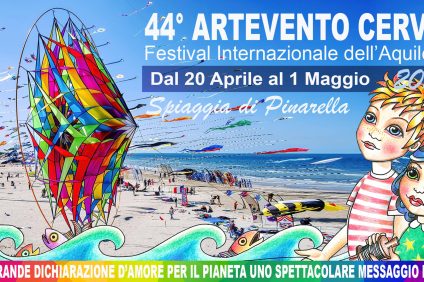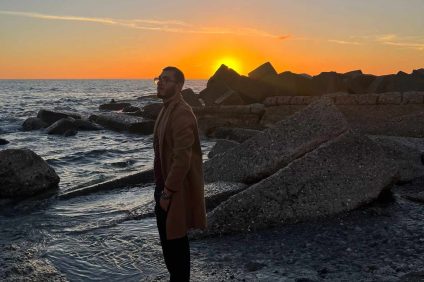Annalisa Di Maria is a scholar, artistic curator and international art expert specializing in Renaissance pictorial iconography. Originally from Alessandria, she lives in a magnificent village in the province of Arezzo. You are a member of the Expert Committee of the Club for UNESCO of Florence, you are one of the signatories of the recent study entitled “La Maddalena of Raphael or when the pupil surpasses the Master”.

Annalisa Di Maria, together with other experts of the caliber of Jean-Charles Pomerol, professor emeritus of the Sorbonne University, Nathalie Popis, specialist in applications of mathematics in art, Andrea Chiarabini, doctor in molecular biology at the University of Urbino Carlo Bo, attributes to Raphael the discovery of a work depicting a Magdalene with the face of Chiara Fancelli, Perugino's wife. The study was published in detail in the authoritative scientific journal ISTE Open Science. We met her to talk to her about this extraordinary find, but also about her passion for the genius Leonardo Da Vinci and for art in general. Let's get to know her better in this interview given exclusively to Italians.it.
Doctor Di Maria, when did your love for art begin?
«I have been immersed in art since my early childhood. My father was a great expert, critic and painter, and he shared his love of art with me. He told me about the lives of great artists, teaching me in her workshop, as was once done, the techniques of the great painters, making me fall in love with her and with drawing, the latter being my greatest passion. I started drawing when I was five. Since I was little, I have always been fascinated, in particular, by Leonardo da Vinci's technique and way of drawing."
What does art represent in your life?
«In general, art is a means of transmitting and immortalizing history. For me it represents a sharing of emotions animated by the spirit of the painter. It can also be translated as the search for a path towards the good, that is, the desire to touch the divine. In this I think of painters like Leonardo da Vinci and Raffaello Sanzio."

She is one of the world's greatest experts on Leonardo da Vinci. Which of the characteristics of this Italian genius particularly intrigued you?
«Leonardo da Vinci's works demonstrate a combination of art, philosophy and science. He was much more than the author of the Mona Lisa. Leonardo da Vinci, fervent defender of Florentine Neoplatonism, gave great importance to the sciences, in particular mathematics. He believed that they held the key to understanding the creation of the world and the universe. Art was a way for him to apply his research and studies. What characterizes this great observer with insatiable curiosity is experimentation and a great depth of humanist spirit guided by the search for the ideal."

What is hidden behind the mysterious smile of the Mona Lisa and why, centuries later, does it continue to enchant the world?
«This enigmatic and sweet smile that radiates to the point of charm, embodies the power of femininity, of a protective mother who perpetuates life. A divine wisdom emanates from this portrait in a misty atmosphere that touches the real and the unreal, that is, the bond of earth and sky or man with God. This work that travels through time reincarnates the spirit of this painter where the soul and beauty are immortal."
Recently, together with other scholars, he stated that the rediscovered work Maria Maddalena, belonging to a private collection, is attributable to Raphael and not to Perugino, as some had claimed (including Sgarbi, ed.). On the basis of what elements did you reach these conclusions?
«Examining it with the naked eye, and therefore live, is the first step that provides the elements to direct it towards an artist or an artistic movement. The stylistic competence of this work, of great finesse in execution, pushed us to carry out numerous scientific tests (pigments, images, support...). The results revealed a work of great executive mastery that corresponded to the entire creative process used by Raffaello Sanzio and therefore confirmed my initial intuitions. The analyzes highlighted the use of the dusting method which consists in transferring a preparatory drawing onto the support of the pictorial composition and numerous repentances of the drawing until the final work.

This is valuable information for the authentication of the original work, that is, the first one that served as a model. These scientific elements attest that the portrait of Chiara Fancelli with the image of Mary Magdalene therefore comes from the creative imagination of Raffaello Sanzio, it is therefore he who created this composition. Finally, we have found, in the archives of Florence, the historical trace of Raphael's Mary Magdalene which was considered lost. In summary, the authentication of a work of art is a long process that requires the collection of numerous clues, both stylistic, historical and scientific."
Who was Chiara Fancelli and how do the works that portray her differ from each other?
«Chiara Fancelli was the wife of Perugino who was Raphael's teacher and then collaborator. As Vasari said, this woman was of great beauty and she was a model for both her husband and Raphael. What differentiates her representation depends on the painter's technicality. In this case, as Nathalie Nolde, art historian and curator/restorer in Chantilly, recalls, the version of Raphael's Magdalene, of great finesse in execution, presents a mixture of softness and strength with a much more enveloping light than the version of Perugino".
What do Leonardo and Raphael have in common?
«Raphael is the worthy spiritual heir of Leonardo da Vinci. For Raphael, observing the work of the Tuscan genius was fruitful. He saw the Mona Lisa and Leda in his studio located in Florence. Copies of drawings bear witness to this. He was amazed by Leonardo's suave model, especially in the use of chiaroscuro and glazes. Just like Leonardo, he was strongly inspired by antiquity. These two sublime minds pursued the search for grace and ideal Platonic beauty with the same ardor."

Another great artist of the past is, without a doubt, Caravaggio. Why was his famous light considered revolutionary?
«Caravaggio revolutionized painting with the dark realism of his canvases and the use of chiaroscuro. His realism, sometimes violent, is a reflection of his temperament which was born from his restless self. For the time, his treatment of light was innovative as he used limited framing with dark backgrounds, muted colors with strong sidelight that created astonishing realism. His works become a living image like a photograph."
What is the substantial difference between the art of the past and modern art?
«Art should be constantly evolving, like man today, but unfortunately this does not always happen with regards to art. That said, modern art carries with it the cultural transmission and influence of the past. For a contemporary artist it is essential that her knowledge draws on the teachings of the masters who preceded us. Then, obviously genius knows no time, today as then. An artist in himself has the need to express something of the soul and art is one of the most important forms of this expression. Art must be creation, continuous innovation, as it was then, originality must be the basis of every artistic creation. Art must be a messenger today as it was then, even with the help of symbols, its aim must be to make people reflect. Nature and its observation over the centuries must be a form of inspiration for art. The art of the past promoted good, beauty and perfection, concepts that must coexist today too."
Who are, in your opinion, the greatest contemporary artists?
«Those who innovate and manage to move people and revolutionize their time, but always with an eye to the past. I appreciate some sculptors and several painters of the modern era."

What importance does art have today?
«Art has different functions. From a historical point of view it is a cultural transmission. A work of art in itself also has the power to share and reveal emotions, thoughts, values and deep feelings and show the capacity for creativity, but you must know how to grasp it. Art must above all be care for the soul."
What impact does it have on modern society?
«Culture and art must promote the awakening of thought and help establish union between others and oneself. This communication with the world is an essential attraction of our civilization to make human beings reflect."
More and more often we receive news of vandalism against works of art. What do these attitudes depend on and what could be done to bring young people closer to art?
«It is essential today to educate our young people to become enlightened citizens, curious and interested in the world around them. Arts and culture education has an essential role to play in the education of citizens because culture plays a fundamental role in how children interpret the world. We must therefore educate them about beauty and respect for it from an early age, because by destroying it we also destroy our tradition and our history."

Of all the women portrayed by Leonardo, which one resembles her most?
"The Gioconda".
What is beauty?
«Beauty is an aesthetic and sometimes moral concept. Its representation results from a personal perception in line with a defined ideal. It gives rise in us what philosophers call the aesthetic feeling which testifies to the pleasure of contemplation. During the Renaissance, beauty embodied a perfection inspired by divine creation with the goal of achieving the divine. According to the precepts of the Florentine humanists, an artistic creation, of supreme beauty, becomes the link between earth and heaven and thus brings us closer to God. Furthermore, in their search for ideal beauty, they attributed greater importance to the soul considered immortal. Therefore, beauty can only be the reflection of the soul."
(Photo: Annalisa Di Maria, Facebook Page)





